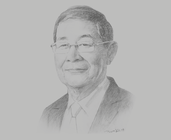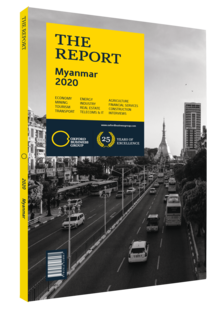U Soe Win, Minister of Planning, Finance and Industry: Interview

Interview: U Soe Win
In what ways will public-private partnership (PPP) projects be facilitated through the PPP Centre?
U SOE WIN: The new PPP Centre’s primary function is to identify and implement high-quality and bankable PPP projects to help bridge our substantial infrastructure gap. It will also help advance the working relationship between the public and private sectors, better leveraging the expertise and financing available from both sides, and helping to reduce Myanmar’s budget deficit. The centre will actively support implementing government agencies (IGAs) – including ministries, and state and regional governments – to identify potential PPP projects from the ones submitted to the new online Project Bank. It will also work with IGAs to develop viable projects and take them to market.
Additionally, private companies will have the opportunity to submit potential projects in the form of unsolicited proposals. The centre will work with IGAs to identify viable unsolicited proposals, and provide IGAs with the support to develop business cases and feasibility studies, begin project preparation and initiate competitive procurement processes through international bidding or Swiss Challenge mechanisms.
The PPP Centre will also assist IGAs and development partners as they explore new financing mechanisms, such as blending debt financing from various sources, or blending equity and debt financing. By doing so, the centre can contribute in turning strategic but unbankable projects into bankable ones. Only PPP projects selected via competitive tender or the Swiss Challenge process will be eligible to seek government support.
How will the liberalisation of the financial services sector contribute to growing the industry?
SOE WIN: In line with liberal economic principles, we have prioritised opening up our financial services sector. We have allowed 13 foreign banks to operate corporate banking businesses via wholly owned branches, and we are in the process of granting permission to more foreign banks to do the same, or allowing both corporate and retail banking through 100% foreign-owned subsidiaries. We have also permitted equity participation by foreign banks in existing domestic banks.
In January 2019 we opened up our insurance industry to foreign investment, permitting five international life insurance companies to operate as wholly foreign-owned branches. We have also allowed foreign, non-life insurance companies to enter into joint ventures with domestic insurance firms.
Other liberalisation measures introduced include opening microfinance to 100% foreign-owned firms, allowing greater access to foreign capital, expanding deposits mobilisation, and applying best industry practices to client-protection principles and other activity in the microfinance segment. These reforms will go a long way towards creating new growth opportunities. Studies suggest that our financial services sector grew by some 6.5% in FY 2018/19, which is a positive sign.
Which factors are behind the growing middle class?
SOE WIN: In recent years we have halved the share of our population living below the poverty line. Some sources also predict Myanmar’s middle class will double between 2013 and 2020, to 10.6m people. Around 29% live in urban areas, meaning that Myanmar remains at a relatively early stage of urbanisation. Private consumption is growing, particularly in urban areas, with increased spending on light transport such as motorbikes and non-food items such as personal care products. This is a positive sign that household spending power is increasing. However, our challenge will be to ensure that spending power also increases in rural areas. Two-step loans are being provided to small businesses and farmers. Over 50% of all paddy farms in the delta region use combine harvesters, up from close to none in 2013. Farmers are also diversifying into more profitable crops, with rural wages increasing by some 40% in the delta region and dry zone in recent years.
You have reached the limit of premium articles you can view for free.
Choose from the options below to purchase print or digital editions of our Reports. You can also purchase a website subscription giving you unlimited access to all of our Reports online for 12 months.
If you have already purchased this Report or have a website subscription, please login to continue.

